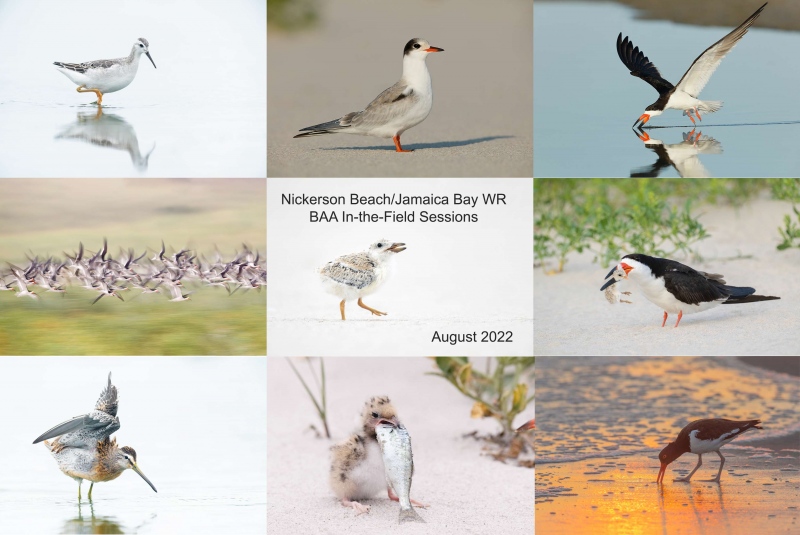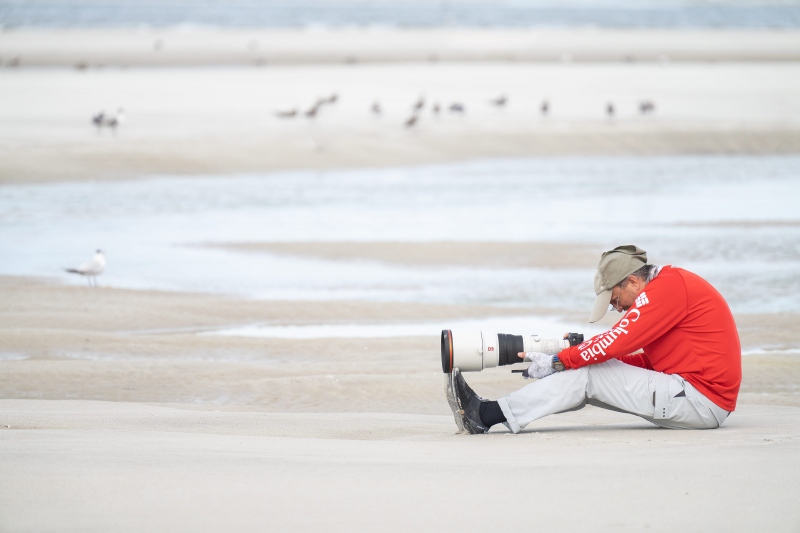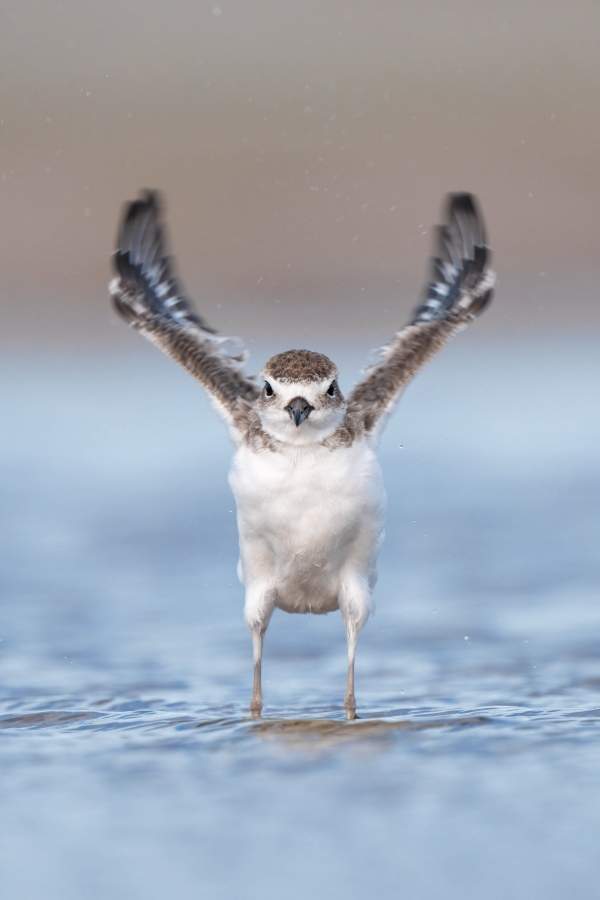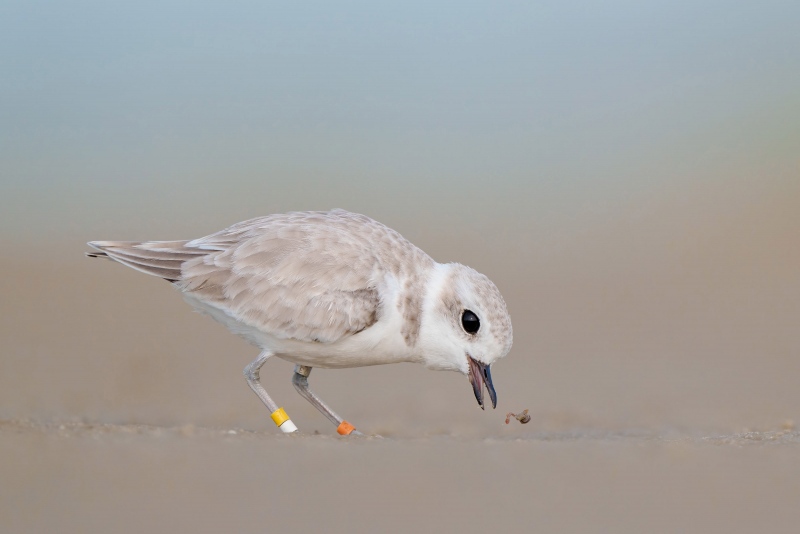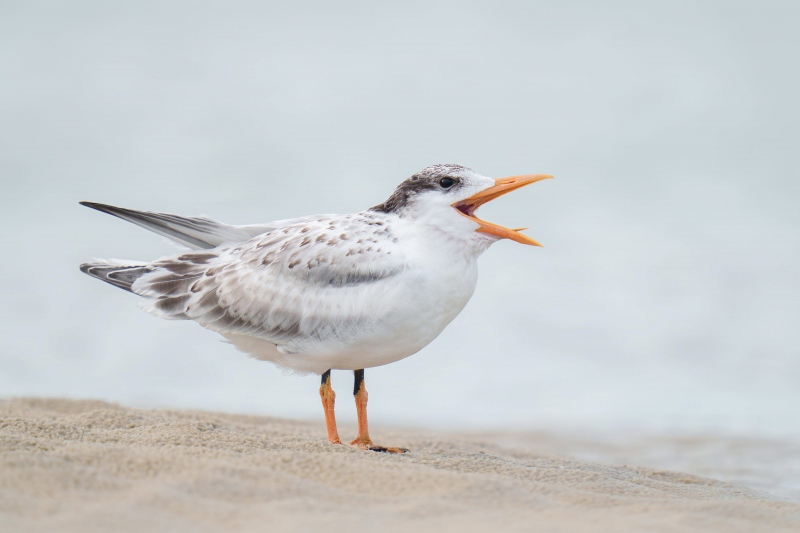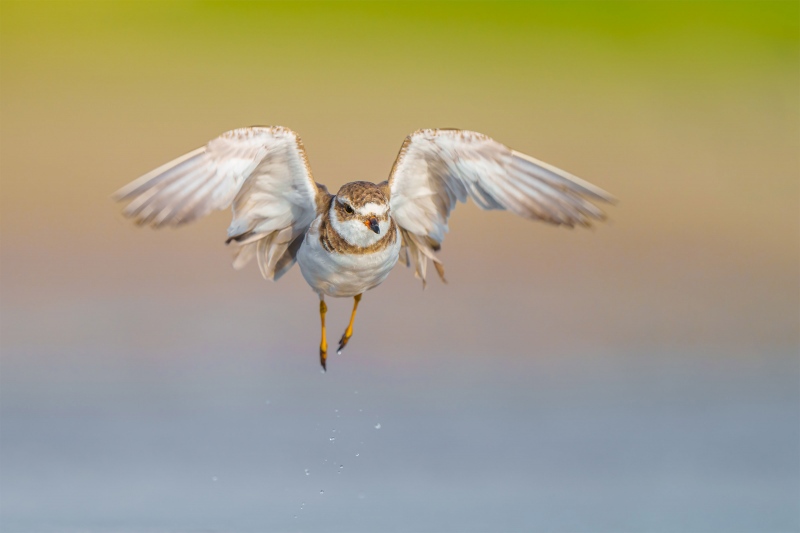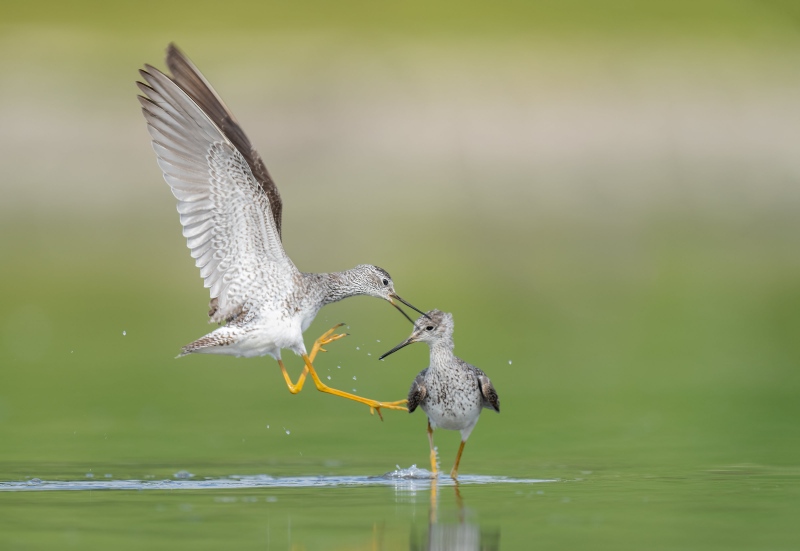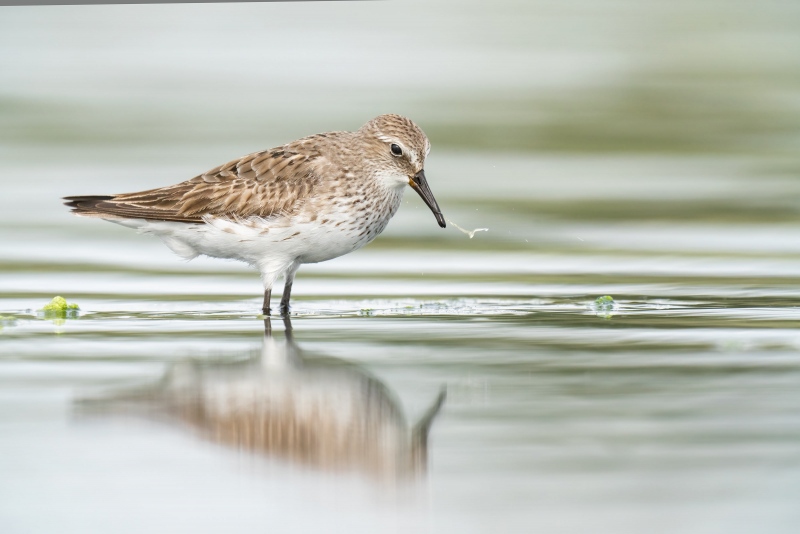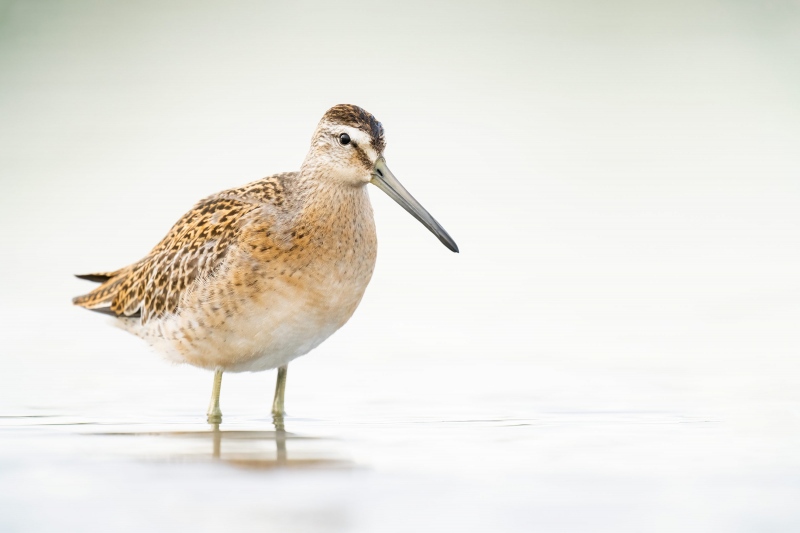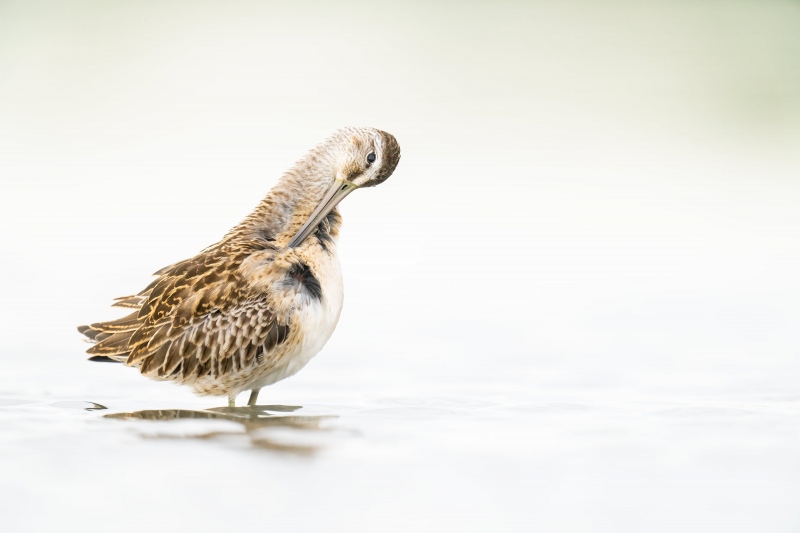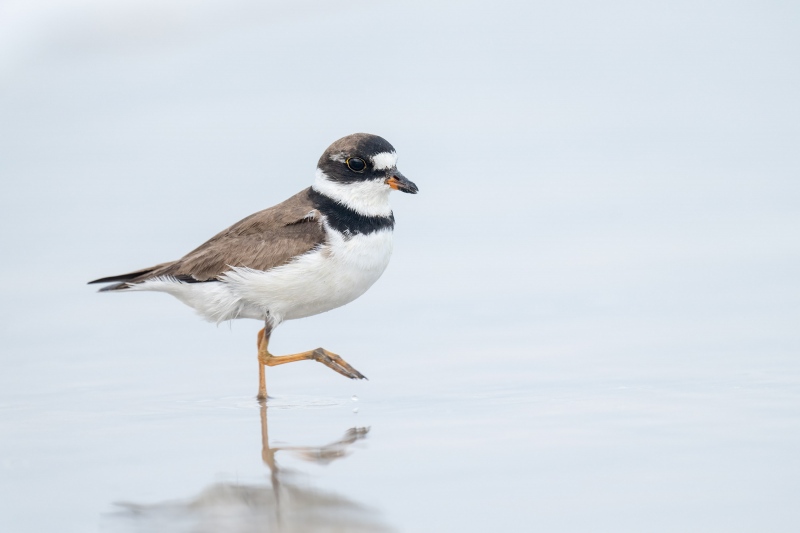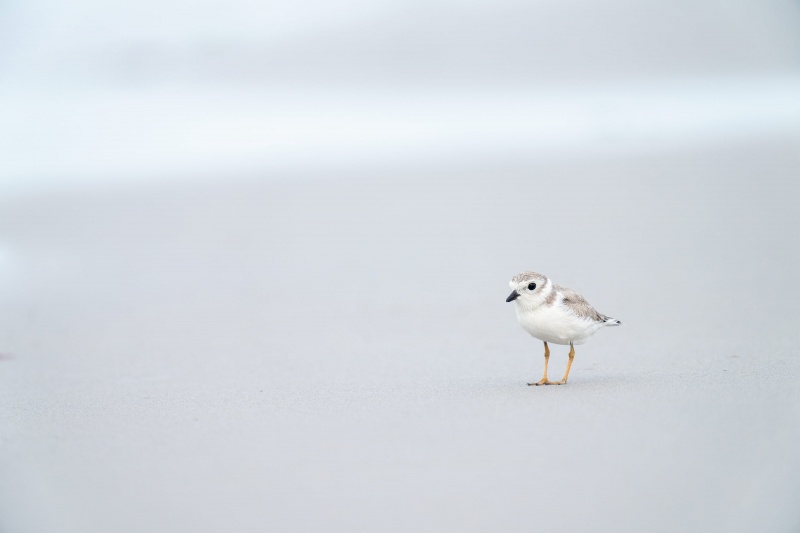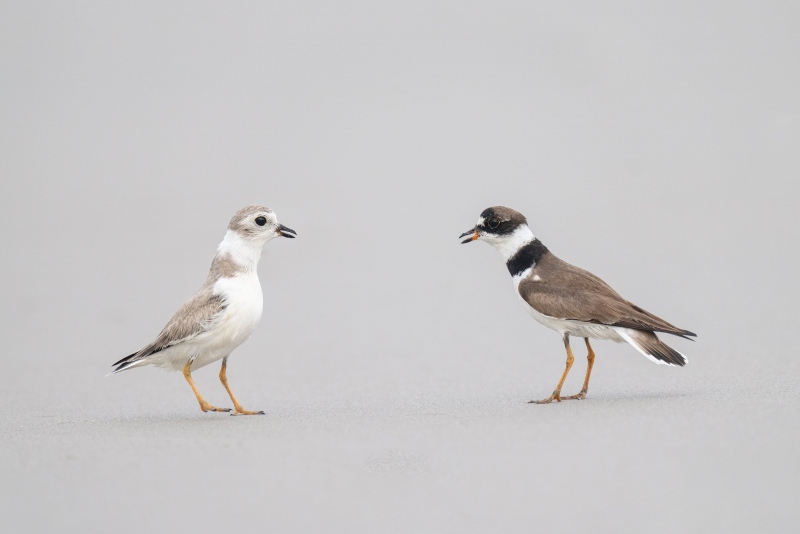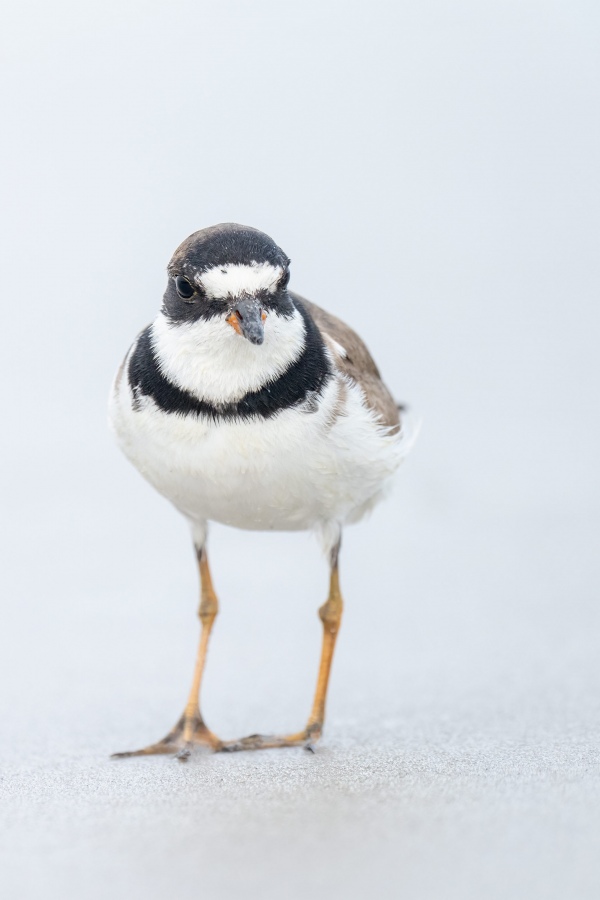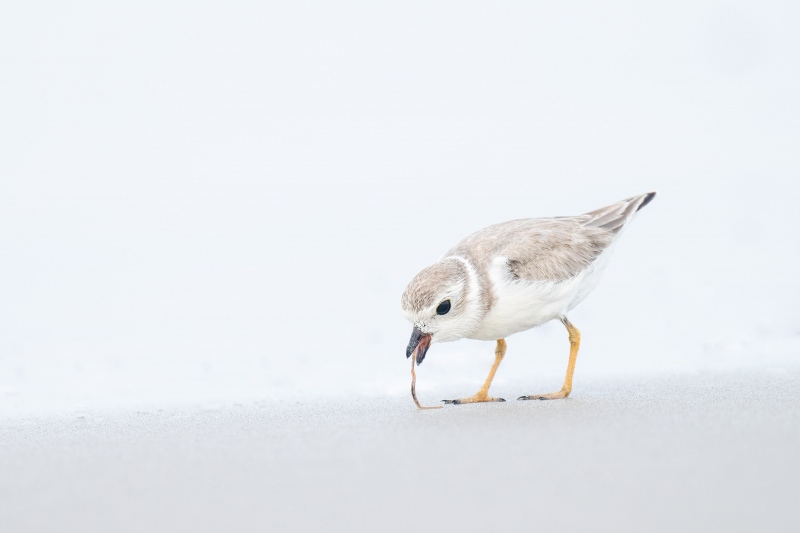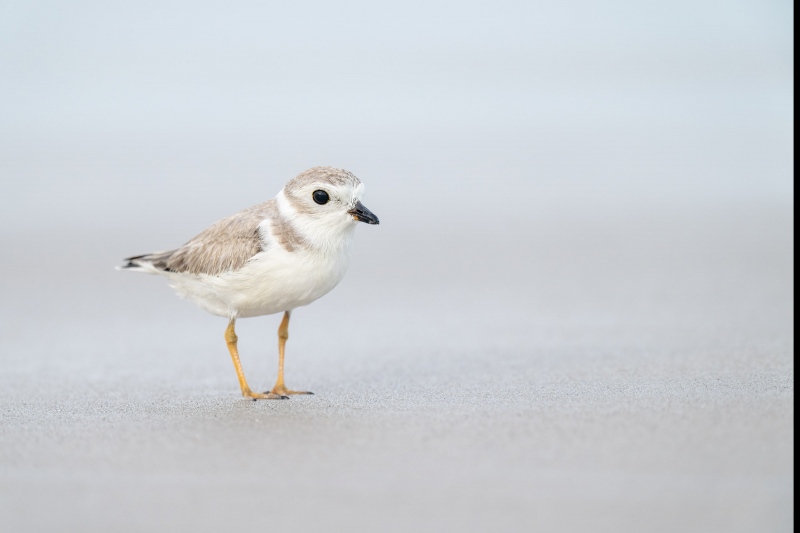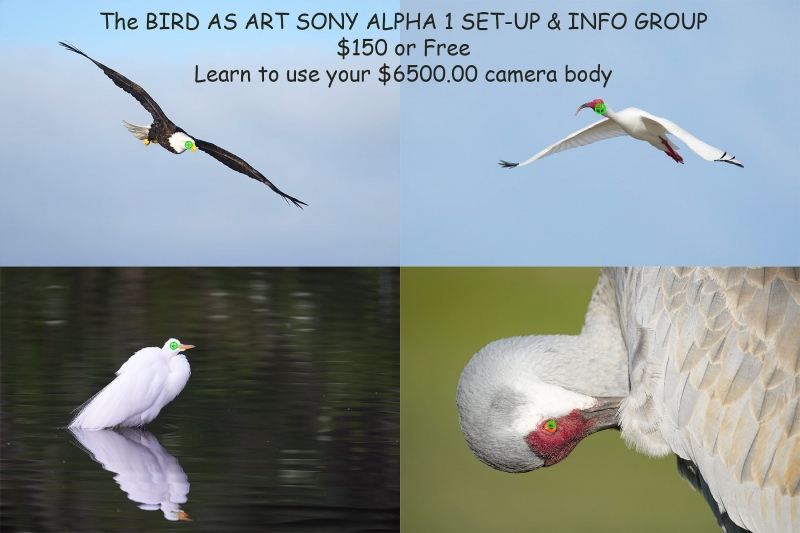August 24th, 2022 What’s Up?
On Tuesday morning, I headed to the East Pond at the last second after deciding to stay in. It was warm and still and buggy and muggy. A hazy sun broke through for about 30 minutes at 6:30am. Working at 1/500 second at 840mm, I created 748 images and kept 37 — 1/500 is not fast enough to freeze feeding shorebirds.
I headed to Nickerson on Tuesday afternoon. There were hundreds of skimmers and terns on the beach with very few birds still inside the colony ropes. There were lots of Sanderlings feeding along the edge of the surf. There was a nice sunset and dozens of pleasing blur opportunities,
Today is Wednesday 24 August 2022. I am not sure if I will be going to the East Pond or to Nickerson. Wherever you are, and whatever you are doing, I hope that you too have a great day. This blog post took about two hours to prepare and makes one hundred fifty-two days in a row with a new one.
Please remember to use the B&H and Amazon links that are found on most blog pages and to use the BIRDSASART discount code at checkout when purchasing your new gear from Bedfords to get 3% back on your credit card and enjoy free second-day air FedEx. Please, also, consider joining a BAA IPT. You will be amazed at how much you will learn!
Time is Running Out
Many folks are scheduled to join me at either Nickerson or JBWR in the next 10 days. If you would like to learn to be a better photographer and get in on the action at Nickerson, get in touch via e-mail or text me at 863-221-2372.
|
|
|
Clockwise from the upper left corner back around to the center: Wilson’s Phalarope, JBWR; just fledged Common Tern, Nickerson; Black Skimmer, adult skimming, Nickerson; Black Skimmer killing tiny skimmer chick, Nickerson; American Oystercatcher foraging at sunrise, Nickerson; Common Tern chick swallowing baby bluefish, Nickerson; Short-billed Dowitcher, juvenile, double overhead wing stretch, JBWR; Black Skimmers, predawn flock blur, Nickerson; Black Skimmer, 10-day old chick, Nickerson.
Click on the card to view a larger version.
Nickerson Beach/East Pond JBWR composite
|
Nickerson Beach/East Pond at Jamaica Bay (JBWR) In-the Field Workshops
Both Nickerson Beach and the East Pond at JBWR offer some of the best midsummer bird photography on the planet. Hundreds of pairs or Black Skimmers and Common Terns along with dozens of pairs of American Oystercatchers breed at Nickerson each season so there are lots of chicks of all sizes and handsome fledged young birds to photograph. Provided that the water levels are low, hundreds of young shorebirds in their handsome fresh juvenile plumages stop by the pond each August on their way south.
Nickerson often reveals nature at it rawest, most basic level. Most days we get to photograph all sorts of dramatic behaviors ranging from skimmers and terns fishing and feeding (and tending) their young. There are often chances to shoot a variety of predatory encounters — gulls eating large skimmer chicks, skimmers attacking (and sometimes killing) skimmer babies, and Peregrine Falcons hunting. And rarely, if we are lucky, Peregrine Falcons catching! Consider joining me to learn a ton both about bird photography and the birds.
I head south on 31 August and should be back home on 1 September (barring anything unforeseen). I am offering In-the-Field sessions at both Nickerson Beach and the East Pond at Jamaica Bay Wildlife Refuge. If you are interested, please get in touch via e-mail or text me at 863-221-2372.
|
|
|
This image was created on 16 July on a Jacksonville IPT. I used the hand held Sony FE 70-200mm f/2.8 GM OSS II Lens with the Sony FE 1.4x Teleconverter (at 280mm) with The One, the Sony a1 Mirrorless Camera. The exposure was determined via Zebras with ISO on the Thumb Wheel. ISO 640: 1/2500 sec. at f/4 (wide open). AWB at 6:14:43pm on a partly cloudy afternoon.
Tracking: Spot S/AF-C with Human Face/Eye detection enabled was active at the moment of exposure and performed perfectly. Be sure to click on the image to enjoy the larger version.
Image #1: David Pugsley toe-podding with my Sony 400mm f/2.8 GM lens with the 1.4X TC and an a1
|
Toe Podding
IPT veteran David Pugsley is the first person I ever saw using the toe-podding technique. It is similar to ankle-podding, but is more stable as the lens barrel is placed between your feet and cannot roll as it can when the lens is resting on your ankle. You can, therefore, get away with using somewhat slower shutter speeds and correspondingly lower ISOs (unless you want or need to be ready for action).
Another advantage with toe-podding is that it is very easy to precisely adjust the height of the lens above the ground by squeezing your feet together to get higher, or by toeing them out to get lower. Toe-podding, however, might not be for everyone. Folks who do not have a lot of flexibility in their hips and torso and those with bad backs may be unable to use this technique. I thought that I was not flexible enough to toe-pod, but when I tried it with the 200-600, I was able to do it rather easily. It should be even easier with the longer 600mm f/4. I look forward to trying it again ASAP.
I used this technique last night and realize that foot-podding might be a better term for it.
|
|
|
This image was created at Fort DeSoto by good friend David Pugsley. While seated on damp sand and working off the tilted rear monitor, he used the toe-podding technique with the Sony FE 600mm f/4 GM OSS lens, the Sony FE 2.0x Teleconverter (at 1200mm) and The One, the Sony Alpha 1 Mirrorless Digital Camera). ISO 2500. 1/2000 sec. at f/8 (wide open). AWB on a cloudy-bright day.
Tracking: Zone/AF-C with Bird-Eye/Face Detection performed perfectly. Be sure to click on the image to enjoy a high-res version.
Image #2: Wilson’s Plover flapping after bath
Image courtesy of and copyright 2021: David Pugsley
|
Low Perspectives
Glancing at David’s four featured images reveals that he loves working low at the beach. That is the same with me. Doing so effectively moves the backgrounds well away from the subjects and renders them completely de-focused. Birds set against soft backgrounds of tan, blue, and green instantly become more beautiful.
|
|
|
This image was created at Fort DeSoto by good friend David Pugsley. While seated on damp sand and working off the tilted rear monitor, he used the toe-podding technique with his Sony FE 600mm f/4 GM OSS lens with the Sony FE 1.4x Teleconverter (at 840mm) with The One, the Sony a1 Mirrorless Camera. ISO 2500: 1/2500 sec. at f/5.6 (wide open). AWB on a cloudy morning,.
Tracking: Zone/AF-C with Bird Face/Eye detection enabled was active at the moment of exposure and performed perfectly. Be sure to click on the image to enjoy the larger version.
Image #3: Banded juvenile Snowy Plover with bit of worm
Image courtesy of and copyright 2021: David Pugsley
|
Would You Remove the Bands?
If this fine image were yours, would you remove the bands? Why or why not?
Snowy Plover is a State-designated Threatened Species in Florida. They breed at DeSoto on Outback Key. I am pretty sure that their numbers there have been increasing in recent years.
|
|
|
This image was created on 16 July on a Jacksonville IPT by participant and good friend David Pugsley. While seated on damp sand and working off the tilted rear monitor, he used the toe-podding technique with my Sony FE 400mm f/2.8 GM OSS lens, the Sony FE 1.4x Teleconverter (at 560mm) and The One, the Sony Alpha 1 Mirrorless Digital Camera). ISO 800. 1/2000 sec. at f/4 (wide open) in Manual mode. AWB on a cloudy bright afternoon.
Tracking: Zone AF-C with Bird Face/Eye detection enabled performed to perfection. Be sure to click on the image to enjoy a high-res version.
Image #4: Royal Tern large chick calling
Image courtesy of and copyright 2022: David Pugsley
|
Shutter Speeds, ISOs, Depth of Field, and Action
Notice that David works wide open with relatively high shutter speeds without worrying about high ISO settings. He wants to be ready to create sharp images of birds in action while realizing that having the eye or eyes in sharp focus negates the need to render the entire bird sharp. That is particularly evident in the Wilson’s Plover image.
|
|
|
This image was created at Fort DeSoto by good friend David Pugsley. While seated on damp sand and working off the tilted rear monitor, he used the toe-podding technique with his Sony FE 600mm f/4 GM OSS lens with the Sony FE 1.4x Teleconverter (at 840mm) with The One, the Sony a1 Mirrorless Camera. ISO 640: 1/2500 sec. at f/5.6 (wide open). AWB on a cloudy-bright morning.
Tracking: Zone/AF-C with Bird Face/Eye detection enabled was active at the moment of exposure and performed perfectly. Be sure to click on the image to enjoy the larger version.
Image #5: Semipalmated Plover flapping in the air after bathing
Image courtesy of and copyright 2022: David Pugsley
|
David Pugsley
Born in Pittsburgh, PA, David took a keen interest in photography back in 1986. The catalyst? The appearance of Halley’s comet. As an avid astronomer, he wanted to capture the comet on film, and did just that.
That first venture into the world of photography lead to many classes and countless images during his high school years, followed by acceptance into Ohio University’s prestigious School of Visual Communications. While attending OU, he developed a love and appreciation for capturing a moment in time. Unfortunately, his path into a photography career would take a detour upon completion of his Bachelor of Fine Arts degree.
Happily that detour — many years in the worlds of graphic design and marketing, came to an end in 2008 when he reignited his passion for both photography and the outdoors and its inhabitants. His goal is to capture wildlife (including and especially birds), nature, and landscape images that you would be proud to display on the walls of your home, office or business. You can see more of David’s images here. David and wife Michelle will be traveling with me to the Galapagos in a bit more than a year 🙂
Thanks, David!
For allowing me to share your fine images with the boys and girls here in this blog post.
Unsolicited via e-mail from Pete Myers
I just spent 4 days in the field in a graduate course in bird photography taught by Artie Morris at Fort DeSoto. After almost 50 years of experience pointing cameras at birds from the Arctic to Tierra del Fuego, New Zealand and beyond, I thought I was good enough. But what I learned from Artie in just four days has taken me to a whole new level. As he aptly puts it, “birds as art,” not simply bird photography. One of those 4 days was the most satisfying I’d ever experienced, anywhere. The IPT left me euphoric about what I’d learned, and frighteningly committed to recreating my portfolio with the techniques and insights he taught me.
|

|
|
Fort DeSoto in fall is rife with tame birds. All the images on this card were created at Fort DeSoto in either late September or very early October. I hope that you can join me there this fall. Click on the composite to enjoy a larger version.
Clockwise from upper left to center: Long-billed Curlew, Marbled Godwit, Caspian Tern, Great Egret, Sandwich Tern with fish, Willet, Black-bellied Plover threat display, Snowy Egret, 2-year old Yellow-Crowned Night-Heron, juvenile Yellow-Crowned Night-Heron.
|
The Fall 2022 Fort DeSoto Instructional Photo-Tours
Fall 2022 Fort DeSoto Instructional Photo-Tour #1
3 1/2 Days: Tuesday 27 September through the morning session on Friday 30 September 2022. $1899.00 includes three working lunches. Limit six photographers/Openings five.
Fall 2022 Fort DeSoto Instructional Photo-Tour #2
3 1/2 Days: 7 October through the morning session on Monday 10 October 2022. $1899.00 includes three working lunches. Limit six photographers.
Fall 2022 Fort DeSoto Instructional Photo-Tour #3
3 1/2 Days: Monday 31 October through the morning session on Thursday 3 November 2022. $1899.00 includes three working lunches. Limit six photographers.
Fort DeSoto, located just south of St. Petersburg, FL, is a mecca for migrant shorebirds and terns in fall. There they join hundreds of egrets, herons, night-herons, and gulls that winter on the T-shaped peninsula. With any luck at all, we should get to photograph one of Florida’s most desirable shorebird species: Marbled Godwit. Black-bellied Plover and Willet are easy, American Oystercatcher is pretty much guaranteed. Great Egret, Snowy Egret, Great Blue Heron, Tricolored Heron, and White Ibis are easy as well and we will almost surely come up with a tame Yellow-crowned Night-Heron or two. And we will get to do some Brown Pelican flight photography. In addition, Royal, Sandwich, Forster’s, and Caspian Terns will likely provide us with some good flight opportunities as well. Though not guaranteed, Roseate Spoonbill and Wood Stork might well be expected. And we will be on the lookout for a migrant passerine fallout in the event of a thunderstorm or two.
On this IPT, all will learn the basics and fine points of digital exposure. Nikon and Canon folks will learn to get the right exposure every time after making a single test exposure, and SONY folks will learn to use Zebras so that they can be sure of making excellent exposures before pressing the shutter button. Everyone will learn how to approach free and wild birds without disturbing them, to understand and predict bird behavior, to identify many species of shorebirds, to spot the good situations, to choose the best perspective, to see and understand the light, and to design pleasing images by mastering your camera’s AF system. Most importantly, you will surely learn to evaluate wind and sky conditions and understand how they affect bird photography. And you will learn how and why to work in Manual mode (even if you’re scared of it). The best news is that you will be able to take everything you learn home with you so that you will be a better photographer wherever and whenever you photograph.
There will be a Photoshop/image review session during or after lunch (included) each full day. That will be followed by Instructor Nap Time.
These IPTs will run with only a single registrant (though that is not unlikely to happen). The best airport is Tampa (TPA). Once you register, you will receive an e-mail with Gulfport AirBnB information. If you register soon and would like to share an AirBnB with me, shoot me an e-mail. Other possibilities including taking a cab to and from the airport to our AirBnB and riding with me. This saves you both gas and the cost of a rental car.
A $600 deposit is due when you sign up and is payable by credit card. Balances must be paid by check two months before the trip. Your deposit is non-refundable unless the IPT sells out with six folks, so please check your plans carefully before committing. You can register by calling Jim or Jennifer during weekday business hours at 863-692-0906 with a credit card in hand, or by sending a check as follows: make the check out to: BIRDS AS ART and send it via US mail here: BIRDS AS ART, PO BOX 7245, Indian Lake Estates, FL 33855. You will receive a confirmation e-mail with detailed instructions, clothing, and gear advice. Please shoot me an e-mail if you plan to register or if you have any questions.
|

|
|
Clockwise from upper left to center: Long-billed Curlew, juvenile Tricolored Heron, Marbled Godwits, Great Blue Heron, juvenile Pectoral Sandpiper, Wood Stork, smiling Sea Scallop, Ruddy Turnstone scavenging needlefish, Great Blue Heron sunset silhouette at my secret spot, and southbound migrant tern flock blur.
|
Up Early, Stay Out Late!
Obviously, folks attending an IPT will be out in the field early and stay late to take advantage of the sweetest light and sunrise and sunset colors (when possible). The good news is that the days are relatively short in early fall. I really love it when I am leaving the beach on a sunny morning after a great session just as a carful or two of well-rested photographers are arriving. The length of cloudy morning sessions will often be extended. Click on the composite to enjoy a larger version.
Typos
With all blog posts, feel free to e-mail or to leave a comment regarding any typos or errors.
August 23rd, 2022 Which of Today’s Four Featured Images is the Strongest Overall?
Please leave a comment and let us know why you made your choice. My favorite will likely surprise most folks.
Wanted to Buy
On the off chance that someone has a Sony 200-600mm G lens sitting on a shelf that they would like to get rid of for a decent price, please contact me via e-mail; I have a serious prospective buyer.
What’s Up?
Thanks to the ridiculous weather forecast, I enjoyed a full day of rest and catching up (mostly catching up) without making a single image.It was my first day off since 2 August. The rain all day with thunderstorms forecast was a bit off. It did not rain a single drop after 5am. By midday it was mostly sunny and the sun remained out until it clouded over at 6pm. The revised midday forecast had called for cloudy skies with rain and thunderstorms.
Today is Tuesday 23 August. The forecast for the morning is for cloudy with a SW wind. I woke early but decided to stay in again. Wherever you are, and whatever you are doing, I hope that you too have a great day. This blog post took about two hours to prepare (including the time spent on the four new image optimizations) and makes one hundred fifty-one days in a row with a new one.
Please remember to use the B&H and Amazon links that are found on most blog pages and to use the BIRDSASART discount code at checkout when purchasing your new gear from Bedfords to get 3% back on your credit card and enjoy free second-day air FedEx. Please, also, consider joining a BAA IPT. You will be amazed at how much you will learn!
Time is Running Out
Many folks are scheduled to join me at either Nickerson or JBWR in the next two weeks for an In-the-Field session or two. The first window for doing shorebirds at the East Pond at Jamaica Bay Wildlife Refuge has closed. The second window is from 24-26 August. I have a private client on the 26th. See the additional details below. Muhammad Arif enjoyed three In-the-Field sessions and made lots of great images with his R5. I hope to share some of them with you here soon. Carlotta Grenier came for her third session recently and Sanjeev Nagrath learned a ton during his three Nickerson Beach sessions. Sandy Brown will be flying in from Seattle for an afternoon at Nickerson and a morning at JBWR this coming week. I head south to catch the Auto train on 31 August.
|
|
|
Clockwise from the upper left corner back around to the center: Wilson’s Phalarope, JBWR; just fledged Common Tern, Nickerson; Black Skimmer, adult skimming, Nickerson; Black Skimmer killing tiny skimmer chick, Nickerson; American Oystercatcher foraging at sunrise, Nickerson; Common Tern chick swallowing baby bluefish, Nickerson; Short-billed Dowitcher, juvenile, double overhead wing stretch, JBWR; Black Skimmers, predawn flock blur, Nickerson; Black Skimmer, 10-day old chick, Nickerson.
Click on the card to view a larger version.
Nickerson Beach/East Pond JBWR composite
|
Nickerson Beach/East Pond at Jamaica Bay (JBWR) In-the Field Workshops
Both Nickerson Beach and the East Pond at JBWR offer some of the best midsummer bird photography on the planet. Hundreds of pairs or Black Skimmers and Common Terns along with dozens of pairs of American Oystercatchers breed at Nickerson each season so there are lots of chicks of all sizes and handsome fledged young birds to photograph. Provided that the water levels are low, hundreds of young shorebirds in their handsome fresh juvenile plumages stop by the pond each August on their way south.
Nickerson often reveals nature at it rawest, most basic level. Most days we get to photograph all sorts of dramatic behaviors ranging from skimmers and terns fishing and feeding (and tending) their young. There are often chances to shoot a variety of predatory encounters — gulls eating large skimmer chicks, skimmers attacking (and sometimes killing) skimmer babies, and Peregrine Falcons hunting. And rarely, if we are lucky, Peregrine Falcons catching! Consider joining me to learn a ton both about bird photography and the birds.
I head south on 31 August and should be back home on 1 September (barring anything unforeseen). I am offering In-the-Field sessions at both Nickerson Beach and the East Pond at Jamaica Bay Wildlife Refuge. If you are interested, please get in touch via e-mail or text me at 863-221-2372.
Instagram
Follow me on Instagram here. I am trying to feature both new and old images, especially images that have not appeared recently on the blog. Or search for birds_as_art.
BIRDS AS ART Image Optimization Service (BAA IOS)
Send a PayPal for $62.00 to birdsasart@verizon.net or call Jim at 863-692-0906 and put $62.00 on your credit card. Pick one of your best images and upload the raw file using a large file sending service like Hightail or DropBox and then send me the link via e-mail. I will download and save your raw file, evaluate the exposure and sharpness, and optimize the image as if it were my own after converting the raw file in Adobe Camera Raw. Best of all, I will make a screen recording of the entire process and send you a link to the video to download, save and study.
Induro GIT 304L Price Drop
Amazingly, we have two, brand-new-in-the-box Induro GIT 304L tripods in stock. They are $699.00 each (were $799.00) and the price now includes the insured ground shipping to the lower 48 states. Weekday phone orders only: 863-692-0906. Order yours here while they last.
Please Remember
You can find some great photo accessories (and necessities, like surf booties!) on Amazon by clicking on the Stuff tab on the orange/yellow menu bar above. On a related note, it would be extremely helpful if blog-folks who, like me, spend too much money on Amazon, would get in the habit of clicking on the Amazon logo link on the right side of each blog post when they shop online. As you might expect, doing so will not cost you a single penny, but would be appreciated tremendously by yours truly. And doing so works seamlessly with your Amazon Prime account.
Please remember that if an item — a Delkin flash card, or a tripod head — for example, that is available from B&H and/or Bedfords, is also available in the BAA Online Store, it would be great, and greatly appreciated, if you would opt to purchase from us. We will match any price. Please remember also to use my B&H affiliate links or to earn 3% cash back at Bedfords by using the BIRDSASART discount code at checkout for your major gear purchases. Doing either often earns you free guides and/or discounts. And always earns my great appreciation.
Brand-New and As-Good-As-Ever Bedfords BAA Discount Policy
Folks who have fallen in love with Bedfords can now use the BIRDSASART coupon code at checkout to enjoy a post-purchase, 3% off-statement credit (excluding taxes and shipping charges) on orders paid with a credit card. The 3% credit will be refunded to the card you used for your purchase. Be sure, also, to check the box for free shipping to enjoy free Second Day Air Fed-Ex. This offer does not apply to purchases of Classes, Gift Cards, or to any prior purchases.
Money Saving Reminder
Many have learned that if you need a hot photo item that is out of stock at B&H and would like to enjoy getting 3% back on your credit card along with free 2nd Day Air Fed-Ex Air shipping, your best bet is to click here, place an order with Bedfords, and enter the coupon code BIRDSASART at checkout. If an item is out of stock, contact Steve Elkins via e-mail or on his cell phone at (479) 381-2592 (Central time). Be sure to mention the BIRDSASART coupon code and check the box for Free Shipping. That will automatically upgrade to free 2nd Day Air Fed-Ex. Steve has been great at getting folks the hot items that are out of stock at B&H and everywhere else. The waitlists at the big stores can be a year or longer for the hard-to-get items. Steve will surely get you your gear long before that. For the past year, he has been helping BAA Blog folks get their hands on items like the SONY a 1, the SONY 200-600 G OSS lens, the Canon EOS R5, the Canon RF 100-500mm lens, and the Nikon 500mm PF. Steve is personable, helpful, and eager to please.
Important Note
As an Amazon Associate, I earn a small percentage when you purchase from Amazon after using any of the Amazon links on the blog (including the logo-link on the right side of each blog post page). My affiliate link works fine with Amazon Prime and using it will not cost you a single cent. Huge thanks, BTW 🙂
If You Enjoy the Blog …
Please, if you enjoy and learn from the blog, remember to use one of my two affiliate programs when purchasing new gear. Doing so just might make it possible for me to avoid having to try to get a job as a Walmart greeter and will not cost you a single penny more. And if you use Bedfords and remember to enter the BIRDSASART code at checkout, you will (still!) save 3% on every order and enjoy free second-day air shipping. In these crazy times — I lost about fifty thousand dollars in income due to COVID 19 — remembering to use my B&H link or to shop at Bedfords will help me out a ton and be greatly appreciated. Overseas folks who cannot order from the US because of import fees, duties, and taxes, are invited to help out by clicking here to leave a blog thank you gift if they see fit.


Gear Questions and Advice
Too many folks attending BAA IPTs and dozens of photographers whom I see in the field and on BPN, are–out of ignorance–using the wrong gear, especially when it comes to tripods and more especially, tripod heads… Please know that I am always glad to answer your gear questions via e-mail. If you are desperate, you can try me on my cell at 863-221-2372. Please leave a message and shoot me a text if I do not pick up.
|
|
|
This image was created on 21 August on an In-the-Field session at the north end of the East Pond at JBWR, Queens, NY. While seated on damp mud and working off the tilted rear monitor, I used the flattened, no-longer available except from BIRDS AS ART Induro GIT 304L tripod/Levered-Clamp FlexShooter Pro-mounted Sony FE 600mm f/4 GM OSS lens with the Sony FE 1.4x Teleconverter (at 840mm) with The One, the Sony a1 Mirrorless Camera. The exposure was determined via Zebras with ISO on the Thumb Wheel. ISO 1000: 1/800 sec. at f/5.6 (wide open). AWB at 4:12:52pm on a then partly sunny afternoon.
Tracking: Zone/AF-C with Bird Face/Eye detection enabled was active at the moment of exposure and performed perfectly. Be sure to click on the image to enjoy the larger version.
Image #1: Greater Yellowlegs squabbling
|
Getting Ready Quickly
When we first sat down on the mud, I chosen a shutter speed of 1/1000 and estimated the exposure by choosing ISO 800. I saw one lesser lying down in the water in a submissive posture. Almost immediately it was whacked by the juvenile on our left in the image. I fired off lots of frames and was lucky to get one nice juxtaposition where I could see the faces of both birds. There were two problems. At 1/1000 second, there was lots of motion blur. I applied Topaz Sharpen AI judiciously to the attacker’s head and bill, but the image quality does not pass muster when examined closely. In addition, I had misjudged the light by 1/3-stop; the image was over-exposed. As all the OvExp pixels were in the GREEN channel, saving the highlights during the raw conversion in Photoshop was easy.
Had action been expected, a shutter speed of either 1/2500 or 1/3200 second would have been called for and the image would have been a lot sharper.
The Question
Do you get a pass on unsharpness and poor image quality with images that portray spectacular action? When, and why or why not?
|
|
|
This image was also created on 21 August on an In-the-Field session at the north end of the East Pond at JBWR, Queens, NY. While seated on damp mud and working off the tilted rear monitor, I used the flattened, no-longer available except from BIRDS AS ART, Induro GIT 304L tripod/Levered-Clamp FlexShooter Pro-mounted Sony FE 600mm f/4 GM OSS lens, the Sony FE 2.0x Teleconverter (at 1200mm) and The One, the Sony Alpha 1 Mirrorless Digital Camera). Shutter Priority at zero. The exposure was determined via Zebra technology with Exposure Compensation on the thumb dial. AUTO ISO set ISO 1600. 1/1000 sec. at f/9 (stopped down 1/3-stop). When evaluated in RawDigger, it was determined that the raw file exposure was solid perfect. AWB at 4:43:37am on a then partly cloudy afternoon.
Tracking: Zone/AF-C with Bird-Eye/Face Detection performed perfectly. Be sure to click on the image to enjoy a high-res version.
Image #2: Fading, worn, molting adult White-rumped Sandpiper with tiny invertebrate prey item
|
White-rumped Sandpiper
There were about fifty white-rumpeds at the north end of the pond alone. I did the shorebird count for Manomet at the pond for five years beginning in 1983 or so. I am not sure what the record-high count for this species was, but am pretty sure that it would have been broken on Sunday.
The first clue to identifying this species is that they are significantly larger than the almost always more numerous Semipalmated Sandpipers. Then note the long wings that extend well past the tail, the prominent eyeline, the bit of orange at the base of the lower mandible, the thin streaks on the side of the breast and the flanks, and the suffused grayish hood about the head and the upper breast.
Learn a ton more about shorebirds in my softcover book Shorebirds: Beautiful Beachcombers.
|
|
|
This image was also created on 21 August on an In-the-Field session at the north end of the East Pond at JBWR, Queens, NY. Again, while seated on damp mud and working off the titled rear monitor, I used the flattened, no-longer available except from BIRDS AS ART, Induro GIT 304L tripod/Levered-Clamp FlexShooter Pro-mounted Sony FE 600mm f/4 GM OSS lens, the Sony FE 2.0x Teleconverter (at 1200mm) and The One, the Sony Alpha 1 Mirrorless Digital Camera). Shutter Priority at zero. The exposure was determined via Zebra technology with Exposure Compensation on the thumb dial. AUTO ISO set ISO 4000. 1/500 sec. at f/8 (wide open). When evaluated in RawDigger, it was determined that the raw file exposure was shown to be dead-solid perfect. AWB at 6:26:54am on a then very cloudy, dark afternoon.
Tracking: Zone/AF-C with Bird-Eye/Face Detection performed perfectly. Be sure to click on the image to enjoy a high-res version.
Image #3: Bright juvenile plumage Short-billed Dowitcher
|
Amazing Technology
Creating super-sharp quality images at 1200mm using ISO 4000 is quite remarkable indeed. When I saw ISO 4000, I was wishing that I had had the 1.4X TC on instead of the 2X. The bird was so large in the frame that I had to add canvas top and right. That was done quickly and easily using Content-Aware Crop.
The Lesson
With the best modern mirrorless camera bodies, there is no reason at all to be scared of the high ISOs. Not to mention Topaz DeNoise AI. As Topaz is discontinuing its affiliate program, the Topaz Getting Started Guide will soon be available in BAA Online Store for $10.00.
|
|
|
This image was created on 21 August on an In-the-Field session at the north end of the East Pond at JBWR, Queens, NY. While seated on damp mud and working off the tilted rear monitor, I used the flattened, no-longer available except from BIRDS AS ART, While seated on damp sand I used the lowered, no-longer available except from BIRDS AS ART, Induro GIT 304L tripod/Levered-Clamp FlexShooter Pro-mounted Sony FE 600mm f/4 GM OSS lens with the Sony FE 1.4x Teleconverter (at 840mm) with The One, the Sony a1 Mirrorless Camera. The exposure was determined via Zebras with ISO on the Thumb Wheel. ISO 1000: 1/800 sec. at f/5.6 (wide open). AWB at 4:12:52pm on a then partly sunny afternoon.
Tracking: Zone/AF-C with Bird Face/Eye detection enabled was active at the moment of exposure and performed perfectly. Be sure to click on the image to enjoy the larger version.
Image #4: Juvenal plumage Short-billed Dowitcher preening
|
The Perfect Preening Pose and Head Angle
Once I switched out the 2X for the 1.4X, I had a lot more room in the frame for the dowitchers. Short-bills are huge compared to Semipalmated Sandpipers and Plovers. And they kept getting closer and closer to me.
For years I have been preaching that the best preening images will offer a clear look at the bird’s face and eye while the head and bill are parallel to the sensor, i.e., to the back of the camera body. Image #4 fills that bill perfectly.
The High Key Look
I love the high key look of Images #3 and #4. The trick is to push the exposure far to the right with some over-exposure of the water. That to yield a correct exposure for the darker subject.
August 22nd, 2022 Photo Contest
All are invited to judge today’s six images as if they were entered in a photo contest. Pick your three favorites and let us know why you made your choices.
iPhone Favor
If you have an old iPhone — the older the better — that is sitting in a drawer, unused, please consider sending it as a gift to my 14-year old grandson, Idris Reimov. He is collecting them. Please shoot me an e-mail for the address. Many thanks, much love. artie
What’s Up?
The forecast for Sunday morning was for completely cloudy by 6:00am with a SE breeze. While they got the wind right, it was completely sunny until 3:00pm. A southeast wind in the morning at Nickerson make things tough for many reasons. I had some nice red light at sunrise but nearly all the birds were away, slightly to the east. I worked the beach down low at 1200mm, and then did some flight. It was, however, not the greatest morning ever.
The afternoon tide looked good for the north end of the East Pond. I met Muhammad Arif there at 3:30pm. The water level is the lowest I have seen in my lifetime. There were about 1500 shorebirds, mostly adult Semipalmated Sandpipers. There were many dozens of mostly adult Lesser Yellowlegs and many dozen fading adult White-rumped Sandpipers. I picked out one adult Western Sandpiper, saw the first juvenile Semipalmated Plover (along with a smattering of adults), saw the first Stilt Sandpiper, a juvenile, and had a total of three young Short-Billed Dowitchers. I was surprised by the still high numbers of adult birds and by the low percentage of juveniles.
Most of the time I was working at 1200mm on the flattened tripod. Once the clouds moved in, I was using ISOs as high as 4000. Again, the SE breeze was problematic as early all the birds were facing slight away from us. Anywho, despite the problematic SE wind, I would up with 185 keepers after the first round of editing. Those included a very few images that I love.
Today is Monday 22 August. The forecast for Lido Beach was for rain all day long, heavy at times, with lots of scattered thunderstorms. Needing some rest, I slept in. When I woke at 7:00, I was not shocked to see that it was not raining. I will likely take the whole day off to get some much-needed work done. Wherever you are, and whatever you are doing, I hope that you too have a great day. This blog post took about two 1/2 hours to prepare (including the time spent on the six new image optimizations) and makes one hundred fifty days in a row with a new one. (It seems that I have corrected the day, date, and streak issues in the last few blog posts. Let me know if I screwed up again. Thanks to all who pointed out the errors. While I appreciated thier comments, it would be great if they could include comments on the photo and image questions at hand as well.
Please remember to use the B&H and Amazon links that are found on most blog pages and to use the BIRDSASART discount code at checkout when purchasing your new gear from Bedfords to get 3% back on your credit card and enjoy free second-day air FedEx. Please, also, consider joining a BAA IPT. You will be amazed at how much you will learn!
Time is Running Out
Many folks are scheduled to join me at either Nickerson or JBWR in the next two weeks for an In-the-Field session or two. The first window for doing shorebirds at the East Pond at Jamaica Bay Wildlife Refuge has closed. The second window is from 24-26 August. I have a private client on the 26th. See the additional details below. Muhammad Arif enjoyed three In-the-Field sessions and made lots of great images with his R5. I hope to share some of them with you here soon. Carlotta Grenier came for her third session recently and Sanjeev Nagrath learned a ton during his three Nickerson Beach sessions. Sandy Brown will be flying in from Seattle for an afternoon at Nickerson and a morning at JBWR this coming week. I head south to catch the Auto train on 31 August.
|
|
|
Clockwise from the upper left corner back around to the center: Wilson’s Phalarope, JBWR; just fledged Common Tern, Nickerson; Black Skimmer, adult skimming, Nickerson; Black Skimmer killing tiny skimmer chick, Nickerson; American Oystercatcher foraging at sunrise, Nickerson; Common Tern chick swallowing baby bluefish, Nickerson; Short-billed Dowitcher, juvenile, double overhead wing stretch, JBWR; Black Skimmers, predawn flock blur, Nickerson; Black Skimmer, 10-day old chick, Nickerson.
Click on the card to view a larger version.
Nickerson Beach/East Pond JBWR composite
|
Nickerson Beach/East Pond at Jamaica Bay (JBWR) In-the Field Workshops
Both Nickerson Beach and the East Pond at JBWR offer some of the best midsummer bird photography on the planet. Hundreds of pairs or Black Skimmers and Common Terns along with dozens of pairs of American Oystercatchers breed at Nickerson each season so there are lots of chicks of all sizes and handsome fledged young birds to photograph. Provided that the water levels are low, hundreds of young shorebirds in their handsome fresh juvenile plumages stop by the pond each August on their way south.
Nickerson often reveals nature at it rawest, most basic level. Most days we get to photograph all sorts of dramatic behaviors ranging from skimmers and terns fishing and feeding (and tending) their young. There are often chances to shoot a variety of predatory encounters — gulls eating large skimmer chicks, skimmers attacking (and sometimes killing) skimmer babies, and Peregrine Falcons hunting. And rarely, if we are lucky, Peregrine Falcons catching! Consider joining me to learn a ton both about bird photography and the birds.
I head south on 31 August and should be back home on 1 September (barring anything unforeseen). I am offering In-the-Field sessions at both Nickerson Beach and the East Pond at Jamaica Bay Wildlife Refuge. If you are interested, please get in touch via e-mail or text me at 863-221-2372.
Whether you are a local or would like to fly in for several days of instruction — a sort of private, or small group. — at worst, IPT, LMK via e-mail so that we can work on a schedule that could possibly include both Nickerson and Jamaica Bay.
Instagram
Follow me on Instagram here. I am trying to feature both new and old images, especially images that have not appeared recently on the blog. Or search for birds_as_art.
BIRDS AS ART Image Optimization Service (BAA IOS)
Send a PayPal for $62.00 to birdsasart@verizon.net or call Jim at 863-692-0906 and put $62.00 on your credit card. Pick one of your best images and upload the raw file using a large file sending service like Hightail or DropBox and then send me the link via e-mail. I will download and save your raw file, evaluate the exposure and sharpness, and optimize the image as if it were my own after converting the raw file in Adobe Camera Raw. Best of all, I will make a screen recording of the entire process and send you a link to the video to download, save and study.
Induro GIT 304L Price Drop
Amazingly, we have two, brand-new-in-the-box Induro GIT 304L tripods in stock. They are $699.00 each (were $799.00) and the price now includes the insured ground shipping to the lower 48 states. Weekday phone orders only: 863-692-0906. Order yours here while they last.
Please Remember
You can find some great photo accessories (and necessities, like surf booties!) on Amazon by clicking on the Stuff tab on the orange/yellow menu bar above. On a related note, it would be extremely helpful if blog-folks who, like me, spend too much money on Amazon, would get in the habit of clicking on the Amazon logo link on the right side of each blog post when they shop online. As you might expect, doing so will not cost you a single penny, but would be appreciated tremendously by yours truly. And doing so works seamlessly with your Amazon Prime account.
Please remember that if an item — a Delkin flash card, or a tripod head — for example, that is available from B&H and/or Bedfords, is also available in the BAA Online Store, it would be great, and greatly appreciated, if you would opt to purchase from us. We will match any price. Please remember also to use my B&H affiliate links or to earn 3% cash back at Bedfords by using the BIRDSASART discount code at checkout for your major gear purchases. Doing either often earns you free guides and/or discounts. And always earns my great appreciation.
Brand-New and As-Good-As-Ever Bedfords BAA Discount Policy
Folks who have fallen in love with Bedfords can now use the BIRDSASART coupon code at checkout to enjoy a post-purchase, 3% off-statement credit (excluding taxes and shipping charges) on orders paid with a credit card. The 3% credit will be refunded to the card you used for your purchase. Be sure, also, to check the box for free shipping to enjoy free Second Day Air Fed-Ex. This offer does not apply to purchases of Classes, Gift Cards, or to any prior purchases.
Money Saving Reminder
Many have learned that if you need a hot photo item that is out of stock at B&H and would like to enjoy getting 3% back on your credit card along with free 2nd Day Air Fed-Ex Air shipping, your best bet is to click here, place an order with Bedfords, and enter the coupon code BIRDSASART at checkout. If an item is out of stock, contact Steve Elkins via e-mail or on his cell phone at (479) 381-2592 (Central time). Be sure to mention the BIRDSASART coupon code and check the box for Free Shipping. That will automatically upgrade to free 2nd Day Air Fed-Ex. Steve has been great at getting folks the hot items that are out of stock at B&H and everywhere else. The waitlists at the big stores can be a year or longer for the hard-to-get items. Steve will surely get you your gear long before that. For the past year, he has been helping BAA Blog folks get their hands on items like the SONY a 1, the SONY 200-600 G OSS lens, the Canon EOS R5, the Canon RF 100-500mm lens, and the Nikon 500mm PF. Steve is personable, helpful, and eager to please.
Important Note
As an Amazon Associate, I earn a small percentage when you purchase from Amazon after using any of the Amazon links on the blog (including the logo-link on the right side of each blog post page). My affiliate link works fine with Amazon Prime and using it will not cost you a single cent. Huge thanks, BTW 🙂
If You Enjoy the Blog …
Please, if you enjoy and learn from the blog, remember to use one of my two affiliate programs when purchasing new gear. Doing so just might make it possible for me to avoid having to try to get a job as a Walmart greeter and will not cost you a single penny more. And if you use Bedfords and remember to enter the BIRDSASART code at checkout, you will (still!) save 3% on every order and enjoy free second-day air shipping. In these crazy times — I lost about fifty thousand dollars in income due to COVID 19 — remembering to use my B&H link or to shop at Bedfords will help me out a ton and be greatly appreciated. Overseas folks who cannot order from the US because of import fees, duties, and taxes, are invited to help out by clicking here to leave a blog thank you gift if they see fit.


Gear Questions and Advice
Too many folks attending BAA IPTs and dozens of photographers whom I see in the field and on BPN, are–out of ignorance–using the wrong gear, especially when it comes to tripods and more especially, tripod heads… Please know that I am always glad to answer your gear questions via e-mail. If you are desperate, you can try me on my cell at 863-221-2372. Please leave a message and shoot me a text if I do not pick up.
|
|
|
This image was created on 20 August 2022 at Nickerson Beach Park, Lido Beach, Long Island, NY. While seated on damp sand I used the lowered, no-longer available except from BIRDS AS ART, Induro GIT 304L tripod/Levered-Clamp FlexShooter Pro-mounted Sony FE 600mm f/4 GM OSS lens with the Sony FE 1.4x Teleconverter (at 840mm) with The One, the Sony a1 Mirrorless Camera. The exposure was determined via Zebras with ISO on the Thumb Wheel. ISO 2000: 1/800 sec. at f/5.6. AWB at 7:33:21am on a cloudy morning.
Tracking: Zone/AF-C with Bird Face/Eye detection enabled was active at the moment of exposure and performed perfectly. Be sure to click on the image to enjoy the larger version.
Image #1: High-stepping adult Semipalmated Plover
|
Lucky Morning
On the cloudy Saturday morning past, I was glad to run into Muhammad Arif and his mom on the beach. He showed me a photo of an un-banded young Piping Plover — late and endangered. He said that he had seen the bird just west of the first jetty to the east. I made the walk, and when I arrived only one bird was feeding in the wash, the semi-plover above. So, I sat behind the lower tripod and went to work.
|
|
|
This image was also created on 20 August 2022 at Nickerson Beach Park, Lido Beach, Long Island, NY. While seated on damp sand, I used the lowered, no-longer available except from BIRDS AS ART, Induro GIT 304L tripod/Levered-Clamp FlexShooter Pro-mounted Sony FE 600mm f/4 GM OSS lens with the Sony FE 1.4x Teleconverter (at 840mm) with The One, the Sony a1 Mirrorless Camera. The exposure was determined via Zebras with ISO on the Thumb Wheel. ISO 2000: 1/800 sec. at f/5.6. AWB at 7:30:06am on a cloudy morning.
Tracking: Zone/AF-C with Bird Face/Eye detection enabled was active at the moment of exposure and performed perfectly. Be sure to click on the image to enjoy the larger version.
Image #2: Small in the big world juvenile Piping Plover
|
Look Who Showed Back Up
I had not been sitting long when the moderately worn juvie Piping Plover flew in a bit farther to the west. I made the image above in keeping with the small-fragile-bird-in-the-big-world theme. I thought to myself, “It would be neat to get a few images of both birds in the same frame.”
|
|
|
This image was also created on 20 August 2022 at Nickerson Beach Park, Lido Beach, Long Island, NY. While seated on damp sand I used the lowered, no-longer available except from BIRDS AS ART, Induro GIT 304L tripod/Levered-Clamp FlexShooter Pro-mounted Sony FE 600mm f/4 GM OSS lens with the Sony FE 1.4x Teleconverter (at 840mm) with The One, the Sony a1 Mirrorless Camera. The exposure was determined via Zebras with ISO on the Thumb Wheel. ISO 2000: 1/1000 sec. at f/5.6. AWB at 7:30:35am on a cloudy morning.
Tracking: Zone/AF-C with Bird Face/Eye detection enabled was active at the moment of exposure and performed perfectly. Be sure to click on the image to enjoy the larger version.
Image #3: Piping Plover/Semipalmated Plover standoff
|
The Standoff
The next thing I know, the two birds were standing and facing each other. The piping’s erect calling posture and the semi-plovers fan-tailed calling posture were meant to threaten the other bird. The dispute was about feeding territory. They never engaged in a squabble and the boundary between their foraging areas was set. Since the plover was feeding more to the west, I scootched about thirty feet farther down the beach to be closer to the plover.
|
|
|
This image was also created on 20 August 2022 at Nickerson Beach Park, Lido Beach, Long Island, NY. While still seated on damp sand I used the lowered, no-longer available except from BIRDS AS ART, Induro GIT 304L tripod/Levered-Clamp FlexShooter Pro-mounted Sony FE 600mm f/4 GM OSS lens with the Sony FE 1.4x Teleconverter (at 840mm) with The One, the Sony a1 Mirrorless Camera. The exposure was determined via Zebras with ISO on the Thumb Wheel. ISO 2000: 1/800 sec. at f/5.6. AWB at 7:37:12am on a cloudy morning.
Tracking: Zone/AF-C with Bird Face/Eye detection enabled was active at the moment of exposure and performed perfectly. Be sure to click on the image to enjoy the larger version.
Image #4: Semipalmated Plover facing vertical
|
Cropped to a Vertical
When the Semipalmated Plover walked up to the edge of the (imaginary) boundary between their foraging territories, it was very close to me. Amazing, Tracking Zone nailed the bird’s right eye as the bird faced me. With the a1’s 51,000,000 pixels, the crop to a vertical was the obvious choice.
|
|
|
This image was also created on 20 August 2022 at Nickerson Beach Park, Lido Beach, Long Island, NY. While still seated on damp sand I used the lowered, no-longer available except from BIRDS AS ART, Induro GIT 304L tripod/Levered-Clamp FlexShooter Pro-mounted Sony FE 600mm f/4 GM OSS lens with the Sony FE 1.4x Teleconverter (at 840mm) with The One, the Sony a1 Mirrorless Camera. The exposure was determined via Zebras with ISO on the Thumb Wheel. ISO 2000: 1/1000 sec. at f/5.6. AWB at 7:45:44am on a cloudy morning.
Tracking: Zone/AF-C with Bird Face/Eye detection enabled was active at the moment of exposure and performed perfectly. Be sure to click on the image to enjoy the larger version.
Image #5: Piping Plover eating tiny worm
|
Foot Trembling
The Piping Plover would stand in one spot on one leg with the other leg extended. It would rapidly tap the surface of the sand with toes of the extended foot. I made a great video of this behavior. I knew that it had something to do with improving the bird’s foraging success. I shared the video with Marc Wortsman when I ran into him at Bagel Chalet in Merrick on Saturday morning. He did some work online and sent me a link to a great paper on foot trembling in a related species, Ringed Plover. I read it (here) with great interest, and learned that there are actually two theories as to the purpose of the behavior. If I ever figure out how to process the a1 videos in i-Movie I will share it with you here.
|
|
|
This image was also created on 20 August 2022 at Nickerson Beach Park, Lido Beach, Long Island, NY. While still seated on damp sand I used the lowered, no-longer available except from BIRDS AS ART, Induro GIT 304L tripod/Levered-Clamp FlexShooter Pro-mounted Sony FE 600mm f/4 GM OSS lens with the Sony FE 1.4x Teleconverter (at 840mm) with The One, the Sony a1 Mirrorless Camera. The exposure was determined via Zebras with ISO on the Thumb Wheel. ISO 1600: 1/1250 sec. at f/5.6. AWB at 7:57:42am on a cloudy morning.
Tracking: Zone/AF-C with Bird Face/Eye detection enabled was active at the moment of exposure and performed perfectly. Be sure to click on the image to enjoy the larger version.
Image #6: Piping Plover stopped
|
Zero Beach Clean-Up
Often, when I post images of birds standing on perfectly clean beaches that have been cleaned up a bit, folks will say, “That looks phony. No beach could be that perfect.” Well boys and girls, I did not clean up a single speck on the gorgeous beach in Image #6. I did some beach clean-up in the first five images. In retrospect, when viewing the enlarged image on the blog, I see that I missed one tiny round light speck. If it bugs you, leave a comment and LMK where it is. Its location is rather easy to describe.
|
|
Image #6A: A7 INFO screen grab for the Piping Plover stopped image
|
Sony a1 Tracking: Zone
Incredibly, with the last firmware update to v1.30, Bird Face/Eye detection was improved significantly. With Tracking: Zone, you can acquire focus within the zone brackets and the AF system will track the eye anywhere in the frame, even when you recompose with the bird’s eye well outside the brackets (as I did with Image #2). This gives you increased compositional freedom; you can put the bird anywhere in the frame even when using (Center) Tracking: Zone.
|
|
|
Click on the image to better see the green eye-AF boxes in action.
Sony Alpha 1 Flight Photography AF Points!
|
The SONY Alpha a1 Set-up Guide and Info Group: $150.00 (or Free)
The SONY Alpha a1 Set-up Guide and Info Group is going great guns as more and more folks chime in with thoughtful questions and experience-based answers. As the a1 is becoming more readily available, more and more folks are getting their hands on this amazing body. By June 1, 2022, the group was up to an astounding 127 lucky and blessed folks. (More than a few folks own two or more a1 bodies!) Some, like me, own three. Early on, we discussed the myriad AF options. I gave my opinion as to the best one for flight and general bird photography. The best news is that everyone in the group receives an e-mail that includes a .DAT file with my a1 settings on it, and explicit directions on how to load my settings onto your a1; talk about convenience! I am now offering a .DAT file compatible with firmware update 1.20. Your entry into the group includes a consolidated Sony a1 CAMSETA2 INFO & GUIDE. New a1 folks will now receive six e-mails instead of the previous 28! You will receive new e-mails as they are published. Simply put, this e-mail guide is an incredible resource for anyone with an a1.
All who purchased their Alpha 1 bodies via a BAA affiliate link — B&H or Bedfords — will receive a free Sony Alpha a1 Set-Up Guide and free entry into the Info Updates group after shooting me their receipts via e-mail. (Note: it may take me several days to confirm B&H orders.). Others can purchase their guide here in the BAA Online Store.
Typos
With all blog posts, feel free to e-mail or to leave a comment regarding any typos or errors.
|
|

